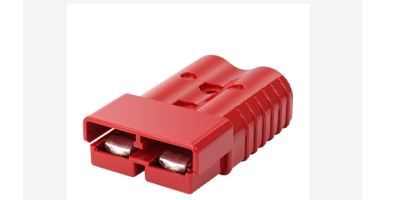In the ever-evolving landscape of electrical connectivity, the Plug-In & Pull-Out Mating Type Series has emerged as a remarkable solution, driven by a confluence of innovative technological forces.
I. The Quest for Enhanced Connectivity Efficiency
One of the primary drivers is the pursuit of improved connectivity efficiency. Traditional connection methods often involve complex wiring procedures, time-consuming installation, and potential errors. The Plug-In & Pull-Out Mating Type Series addresses these issues through its intuitive design. For instance, the IF-ADS-350A Battery charging connector plug and other models in the series feature a precise mating mechanism. The pins and sockets are engineered with high tolerances to ensure a snug fit and optimal electrical contact. This allows for quick and effortless plugging and unplugging, minimizing downtime during equipment setup or maintenance. In industrial settings where rapid battery replacements are crucial, such as in forklift operations with the IF-ADS-50A Power Forklift Battery connector, this efficiency translates into increased productivity and reduced operational costs.
II. Robustness and Reliability Imperatives
The need for robustness and reliability in electrical connections is another key driver. In applications ranging from battery charging in harsh environments to powering critical industrial machinery, the Plug-In & Pull-Out Mating Type Series incorporates advanced materials and structural designs. The connectors are constructed with materials that possess excellent electrical conductivity and mechanical strength. Their flame retardant rating of UL94-0, as seen in models like the IF-ADS-175A Battery Quick Connect Disconnect Cable, ensures safety even in the event of electrical faults or overheating. The mechanical design includes features such as secure locking mechanisms and reinforced housings. These prevent accidental disconnections due to vibrations or mechanical shocks, which is vital in mobile applications or in industrial environments with heavy machinery in operation.
III. Adaptability to Diverse Application Requirements
The series' ability to adapt to a wide array of application requirements fuels its innovation. With current ratings ranging from 50A to 350A and voltage ratings up to 600VDC Max, and operating temperatures spanning from -25 to 105℃, as exemplified by various models, it can serve diverse industries. In the automotive sector, the connectors can handle the power demands of electric vehicle batteries during charging. In renewable energy installations, they facilitate the connection of energy storage systems. This adaptability is achieved through modular design principles. The connectors can be customized with different pin configurations and cable lengths, allowing engineers to tailor them to specific project needs. This flexibility not only broadens the application scope but also encourages further technological exploration to meet the evolving demands of different industries.
In conclusion, the innovative technology behind the Plug-In & Pull-Out Mating Type Series is a response to the industry's call for efficient, reliable, and adaptable electrical connection solutions. It continues to evolve, driven by the ever-expanding needs of modern electrical systems across multiple sectors.
